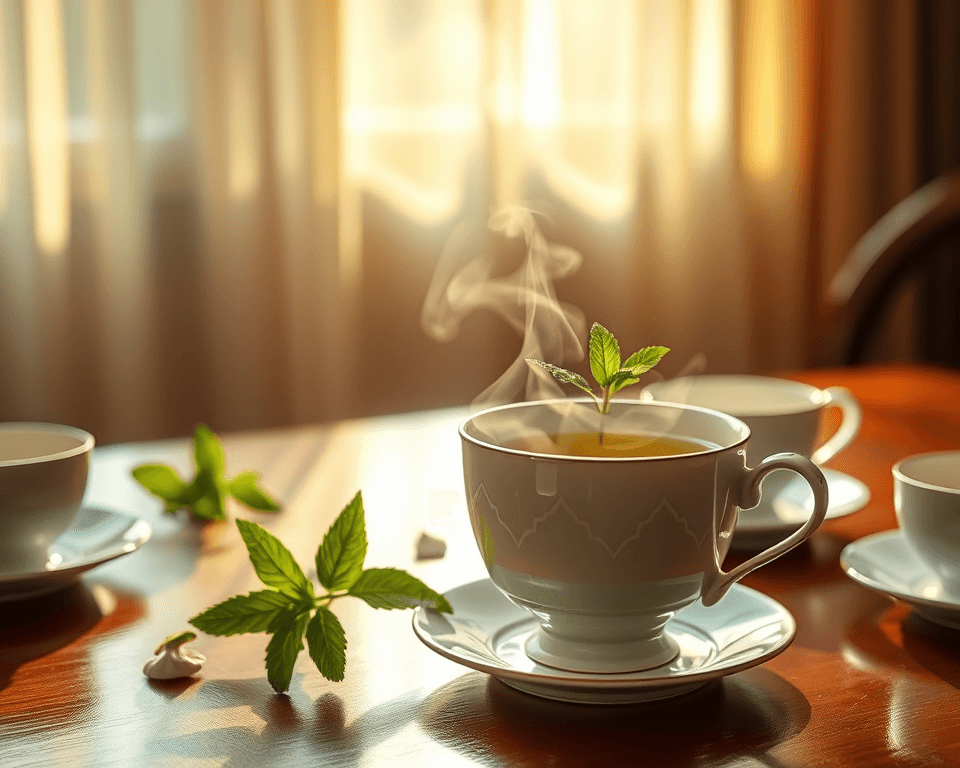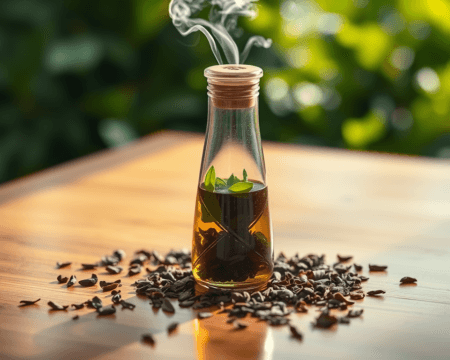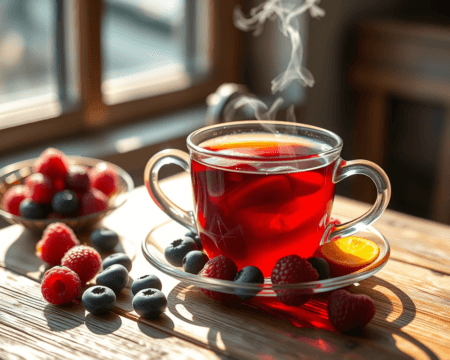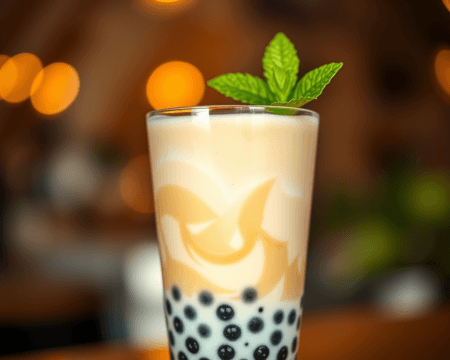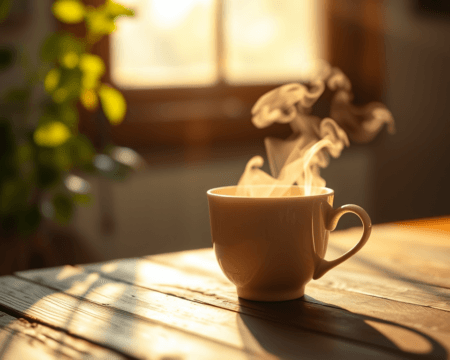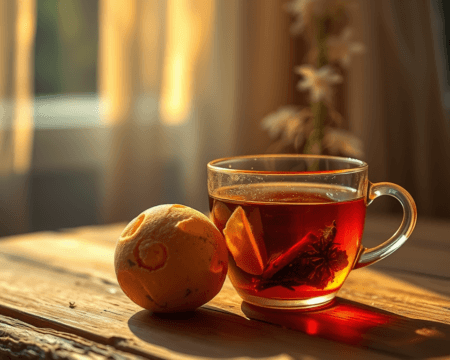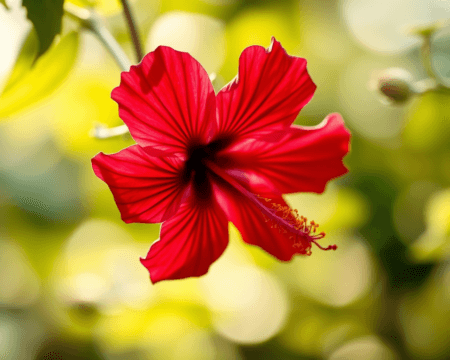You pour yourself a cup of tea, take a moment to breathe in that aromatic steam, and instantly feel more centered. But while you’re savoring that soothing sip, have you ever stopped to think about those calories? Whether you’re a tea lover or just trying to keep an eye on your intake, understanding the caloric content of different teas can totally change the game. Here’s the deal: tea can either be a magical health elixir or a sneaky calorie trap depending on what you brew up. So here’s everything you need to know about calorie counts in tea, from the type you choose to what you’ll toss into it.
Key Takeaways
- Different types of tea have varying calorie counts, with herbal teas often being the lowest.
- The way you prepare your tea significantly impacts its caloric content—brewing methods matter!
- Additives like sugar and milk can inflate the calorie count, but low-calorie alternatives are available to satisfy your cravings without the guilt.
- Specialty teas might surprise you with their unique calorie profiles, influenced heavily by flavors and ingredients.
- Be mindful of brewing time and temperature to optimize both flavor and calorie count.
Understanding Caloric Content in Different Tea Types
Caloric Values of Common Tea Varieties
First off, let’s talk about the basics—the fundamental players in the tea game. Depending on the kind of tea you go for, the calorie content can vary widely. Here’s a quick snapshot:
- Black Tea Calories: This bold beverage typically has about 2 calories per cup when served plain. Not too shabby if you ask me!
- Green Tea Nutrition: Often touted for its health benefits, green tea has roughly the same at about 2 calories per cup, but it’s packed with antioxidants that kick your metabolism into gear.
- Herbal Tea Content: This one’s my favorite for zero-calorie sipping. Herbal teas, like chamomile or peppermint, aren’t derived from the Camellia sinensis plant, meaning they have about 0 calories. Yup, you read that right!
- Oolong Tea Calories: Oolong is in the middle ground with about 2-3 calories per cup. It’s a fantastic choice if you want to explore flavors while staying low on calories.
- White Tea Calories: This delicate type has about 2 calories per cup. It’s subtle and nuanced—perfect for when you want something light and refreshing.
That brings us to a pretty essential realization. Calorie comparison tea reveals that going for the right type can make managing your intake a breeze.
How Preparation Methods Affect Caloric Content
Now, let’s get real about how you make tea. The caloric changes in tea can be significant based on your brewing process. Here’s how it shakes out:
Brewing Tea Calories: Just because tea is low-cal doesn’t mean you can’t add to the count. The longer you steep, the more flavor—and potentially, more caloric compounds—might leach into your brew. Certain teas can have more tannins released with longer steeping times, which can change your overall experience.
Calorie Increase in Tea: If you’re a fan of bottled iced teas, hold up! Those bad boys can pack in a ton of calories. Many commercial brands have added sugars and artificial flavors, turning a refreshing drink into a caloric nightmare. Best to stick to homemade if you’re looking to keep it in check.
Brewing Methods Calories: Opt for methods that keep it simple. Quick steeps for delicate teas or longer if you enjoy bolder flavors will ensure you maximize enjoyment without skyrocketing those calories.
The Impact of Additives on Tea Calories
Calories from Sugar, Milk, and Other Additives
Let’s face it, some folks just can’t drink their tea straight. The thing is, once you start tossing in sweeteners, milk, or other add-ins, those calories can pile on like nobody’s business.
Sugar in Tea: One teaspoon of sugar adds about 16 calories—not breaking the bank, but let’s be honest, it can add up fast if you’re sweetening your tea like you’re at a soda bar.
Milk Calories Tea: Planning to splash in some milk? Whole milk adds about 18 calories per tablespoon, while trying out alternatives like almond milk can drop it down to just 6 calories. Finding the right balance can keep the flavor while leaving your waistline happy!
Caloric Increase with Milk: Let’s talk chai. It’s delicious, but if you overload on sugar and cream, that cozy cup could easily become a 200-calorie monster. Ouch!
This leads us directly into a realm of low-calorie alternatives.
Low-Calorie Alternatives for Tea Lovers
So, what do you do if you’re looking for those low-calorie tea options? Here’s the scoop!
- Calorie-Free Tea: Opt for herbal teas or green teas without sweeteners that keep the zero calorie promise.
- Unsweetened Tea Varieties: Go for unsweetened iced teas, or microbrew your own batch of cold brew. Trust me—once you nail the homebrew technique, you won’t go back!
Not to mention, there are so many delicious tea alternatives for weight watchers that won’t leave you feeling deprived. Check on brands like Tazo or Harney & Sons that have a variety of low-cal options to keep your taste buds delighted without the heft.
Comparisons of Caloric Content in Specialty Teas
Caloric Value of Specialty and Flavored Teas
Now things get interesting with specialty and flavored teas. These unique brews have their own quirks when it comes to calorie counts.
Flavored Tea Calories: Teas like Earl Grey or those fruity blends can hover around the same low-cal mark but watch out for those with artificial sweeteners—they might seem innocent at 0 calories but can have a weird effect on your metabolism.
Chai Tea Nutrition: Don’t overlook chai! Depending on preparation, it can range anywhere from 30 to 100 calories per cup, especially if you add that milk and sugar.
Matcha Calorie Content: That trendy green powder isn’t just pretty. One gram of matcha has about 3 calories but pack in the flavor and energizing benefits. Just keep in mind that lattes can hike those numbers quick with added sugars and dairy.
Rooibos Calories: This naturally caffeine-free tea is a legendary low-cal option at just about 2 calories for those who enjoy a little variety.
Understanding the caloric breakdown flavored teas allows you to make smarter choices based on your mood and cravings.
The Role of Brewing Time and Temperature in Tea Calories
Think brewing time is just for flavor? Nope! Brewing and calories correlation is real.
- Optimal Brewing Temperature Tea: If you want distinct flavors while keeping calories low, aim to brew your green tea at around 175°F.
- Steeping Duration Calories: Short steeping for green or white teas keeps those flavor compounds intact without leaching too many unwanted extras.
Now let’s talk specifics. If you’re gung-ho about lowering calories, aim for less than 2 minutes on your green and white teas and about 4-5 minutes for those darker varieties. It’s about mastering the science of tea brewing—bringing out that taste without turning it into a calorie fest.
Navigating the world of tea doesn’t have to be daunting. Each sip can be as refreshing for your palate as it is for your health. So the next time you reach for your kettle, remember: the type of tea, the way you brew it, and those little extras can all affect your calorie count. Savor each cup, stay informed, and enjoy your tea journey!
Frequently Asked Questions
How many calories are in herbal tea?
Herbal teas are generally the lowest in calories, often containing zero to minimal calories. This is because they are made from a variety of herbs, flowers, and fruits, which usually do not add significant caloric content when brewed.
Do brewing methods affect the taste of tea?
Yes, brewing methods can greatly influence the flavor of your tea. Factors such as water temperature, steeping time, and the type of tea used all play a role in extracting flavors and compounds, which can enhance or diminish the overall taste experience.
Are there healthy alternatives to sweeten my tea?
Absolutely! Low-calorie options like stevia, monk fruit, or agave syrup can be excellent substitutes for sugar. Additionally, using natural flavors such as citrus peels, cinnamon, or vanilla can add sweetness without the calories.
Is green tea lower in calories than black tea?
Typically, both green and black teas have similar low-calorie counts when prepared without additives. However, green tea often contains more antioxidants and can contribute to a greater overall health benefit, making it a popular choice among health-conscious drinkers.
Can the calorie count change with different tea brands?
Yes, different tea brands may offer varying blends and ingredients that can affect calorie counts. Always check the packaging for specific nutritional information if you’re monitoring your caloric intake closely.
Does adding milk to tea significantly increase its calorie count?
Yes, adding milk (especially full-fat milk) can increase the calorie count significantly, depending on the amount used. For lower-calorie options, consider using almond, oat, or skim milk as alternatives.
Is it true that longer brewing times result in more calories?
No, longer brewing times do not increase the calorie count of your tea. However, they can enhance the flavor and strength. Just be cautious, as over-brewing can lead to bitterness, especially in delicate teas.
What are specialty teas, and do they have higher calories?
Specialty teas often contain unique flavors and ingredients—like fruit pieces, sweeteners, or milk—that may increase their calorie content compared to standard teas. Make sure to review nutritional labels to understand their caloric impact.
Can herbal teas help with weight loss?
While herbal teas do not directly lead to weight loss, certain types, like those containing ingredients such as green tea extract or dandelion, may help boost metabolism or improve hydration, which can contribute to a weight loss program when combined with a healthy diet and exercise.




